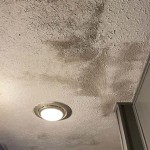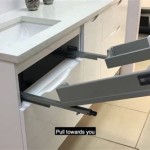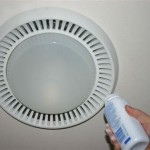Installing Grab Bars In Your Bathroom: A Comprehensive Guide
Bathroom safety is paramount, particularly for individuals with mobility challenges, seniors, or those recovering from injuries. A seemingly simple installation, grab bars can significantly reduce the risk of slips and falls, providing stability and support where it's most needed. This article provides a detailed guide to installing grab bars in a bathroom, focusing on proper planning, preparation, and execution to ensure safety and longevity.
Before commencing any installation project, it is crucial to assess the specific needs and requirements of the bathroom user. Consider the individual's height, reach, and any physical limitations. The placement of grab bars should be strategic, taking into account the areas where support is most frequently needed, such as near the toilet, in the shower, and next to the bathtub. Careful planning at this stage contributes to a functional and safe bathroom environment.
The selection of appropriate grab bars is equally important. They are available in various lengths, styles, and materials, ranging from stainless steel to coated finishes. The chosen material should be durable, corrosion-resistant, and easy to grip, even when wet. Furthermore, the grab bars must comply with relevant safety standards and regulations, ensuring they can withstand the required weight-bearing capacity. Consider the aesthetics of the bathroom as well, opting for grab bars that complement the existing décor.
Gathering the necessary tools and materials is the next crucial step. This typically includes a drill, drill bits (suitable for the wall material), a stud finder, a level, a measuring tape, a pencil, safety glasses, and appropriate fasteners (screws or bolts). The specific type of fasteners required will depend on the wall construction. Having all materials readily available streamlines the installation process and minimizes potential delays.
Identifying Wall Studs and Reinforcement
One of the most critical aspects of grab bar installation is securing them to wall studs. Wall studs are the vertical framing members that provide structural support within the wall. Using a stud finder, locate and mark the position of these studs. If studs are not ideally located for grab bar placement, additional reinforcement may be necessary. This reinforcement typically involves installing blocking between the studs to provide a solid anchoring point for the grab bars.
Blocking can be installed by cutting pieces of lumber to fit snugly between the studs at the desired height. These pieces are then securely fastened to the studs using screws. The blocking provides a larger surface area for the grab bar to be mounted to, distributing the weight and ensuring a more secure installation. Accessing the wall cavity for blocking installation may require cutting into the drywall, which will subsequently need to be repaired and refinished.
Alternative reinforcement methods include using specialized mounting plates or flanges designed for grab bars. These plates are typically larger than the grab bar flange and distribute the weight over a wider area of the wall. They are attached to the existing studs and provide a solid base for mounting the grab bar. When using these plates, ensure they are compatible with the wall construction and are installed according to the manufacturer's instructions.
In situations where wall studs are inaccessible or inadequate, consider using toggle bolts or other heavy-duty anchors. These anchors are designed to expand behind the wall surface, providing a secure hold. However, it is important to select anchors that are rated for the weight-bearing capacity required for grab bars. Incorrectly chosen anchors can lead to the grab bar pulling away from the wall, resulting in a potential safety hazard.
Drilling Pilot Holes and Mounting the Grab Bars
Once the studs or reinforcement are located and marked, the next step is to drill pilot holes. Pilot holes are small holes that guide the screws or bolts into the wall, preventing the wood from splitting and ensuring a more secure connection. Use a drill bit that is slightly smaller than the diameter of the screws or bolts being used. Position the grab bar in the desired location and mark the screw locations on the wall. Drill the pilot holes at these marked locations, ensuring they are perpendicular to the wall surface.
After drilling the pilot holes, carefully align the grab bar with the holes and begin fastening it to the wall. Use the appropriate screws or bolts, ensuring they are long enough to penetrate deeply into the wall studs or reinforcement. Tighten the screws or bolts gradually, alternating between each screw to ensure even pressure distribution. Avoid over-tightening, as this can strip the screw holes or damage the grab bar.
As the grab bar is being secured, use a level to ensure it is perfectly horizontal or vertical, depending on the desired orientation. An uneven grab bar can be uncomfortable to use and may not provide the necessary support. Make any necessary adjustments to maintain the proper alignment throughout the fastening process. Once all the screws or bolts are tightened, double-check the stability of the grab bar by applying pressure to it in various directions. It should feel solid and secure, with no noticeable movement.
For tiled walls, special considerations are necessary. Drilling through tile requires a specialized tile drill bit to prevent cracking or chipping. Apply masking tape to the tile surface before drilling to further minimize the risk of damage. Start drilling slowly and gradually increase the speed as the bit penetrates the tile. Once through the tile, switch to a drill bit suitable for the underlying wall material. When installing grab bars on tiled walls, it is crucial to seal the screw holes with silicone caulk to prevent water from seeping behind the tile and causing damage.
Ensuring Stability and Compliance
The final step involves verifying the stability of the installed grab bars and ensuring they comply with relevant safety standards and regulations. Apply significant weight to the grab bars in various directions to test their load-bearing capacity. If any movement or instability is detected, re-evaluate the installation and make necessary adjustments. This may involve tightening the screws, adding additional reinforcement, or replacing the fasteners with stronger ones.
Consult local building codes and regulations to ensure the grab bar installation meets the required safety standards. These standards typically specify the minimum weight-bearing capacity, the required height and location of the grab bars, and other relevant safety considerations. Adhering to these standards ensures the grab bars provide the necessary support and protection for the user.
Inspect the grab bars regularly for signs of wear and tear, such as loose screws, corrosion, or damage to the finish. Promptly address any issues to maintain the safety and functionality of the grab bars. Periodic maintenance, such as tightening screws and cleaning the surface, can extend the lifespan of the grab bars and ensure they continue to provide reliable support.
If any uncertainty persists regarding the proper installation of grab bars, seeking professional assistance from a qualified contractor or handyman is advisable. Professionals possess the knowledge and experience to ensure the grab bars are installed correctly and safely, providing peace of mind and minimizing the risk of accidents. A properly installed grab bar is a worthwhile investment in bathroom safety, promoting independence and reducing the likelihood of falls.

Proper Shower Grab Bar Placement Keeps Your Family Safe Improveit

How And Where To Install Bathroom Safety Rails Grab Bars

Proper Shower Grab Bar Placement Keeps Your Family Safe Improveit

Grab Bar Installation Hunker Bars In Bathroom Shower

Installing Grab Bars For Shower Safety Avacare Medical Blog

How To Install Grab Bars The Home Depot

How High Should Grab Bars Be Installed Right Bar Height

Handicapped Grab Bars Installation Maryland Dc Virginia In Bathroom Bar

Grab Bar Installation Guides Grabbars Com

Shower Grab Bar Install 101 Home Fixated
Related Posts







